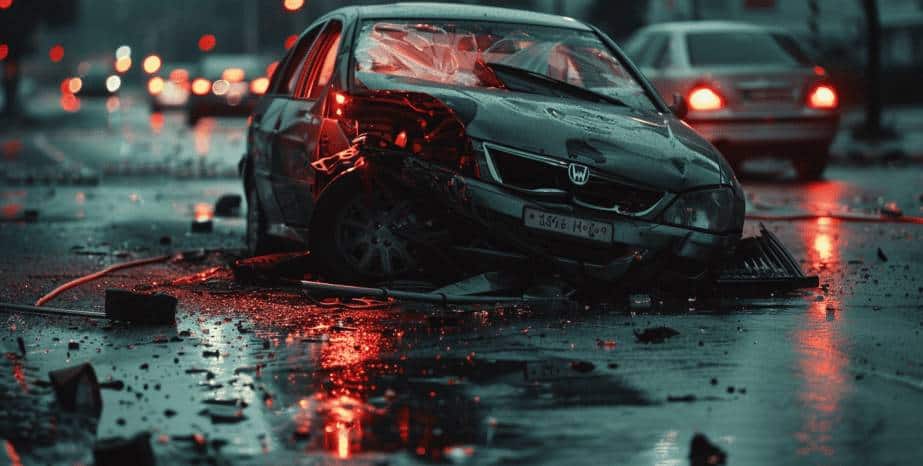8730 Wilshire Boulevard, California 90211
Get Help Now
8730 Wilshire Boulevard, California 90211
Get Help Now

If a smoker gets lung cancer, the illness usually has multiple causes, such as risky behavior, bodily genetics, and an unhealthy environment. This same basic principle applies to car wrecks. Driver error causes almost all vehicle collisions, and sometimes, both drivers erred. When such cases go to court, all states have a procedure for dealing with these situations. After hearing the evidence, jurors must divide responsibility on a percentage basis, such as 50-50 or 80-20.
At that point, different states have different rules. Most states have cutoffs. For example, in neighboring Nevada, a victim is only entitled to damages if the tortfeasor (negligent driver) was at least 51 percent responsible for the wreck, in the eyes of jurors. California is one of only nine pure comparative fault states. Victims are entitled to a proportionate share of damages, even if they were 99 percent responsible for the wreck.
The comparative fault rule usually doesn’t apply if a defective product partially caused a wreck. For example, if a tire blowout caused Alex to lose control of his vehicle and crash into another car, the tire manufacturer is usually strictly liable for all damages. The tire company could file a claim against Alex and blame him for part of the wreck, but that’s between Alex and the tire company.
The bottom line is that, even if you were partially responsible for a car accident, a Los Angeles car accident attorney can still obtain compensation for your economic losses, such as medical bills, and noneconomic losses, such as pain and suffering. So, if an insurance adjuster or emergency responder said you caused the wreck, that’s not the last word in the matter.
Comparative fault is an affirmative defense. The insurance company or other defendant has the burden of production as well as the burden of persuasion. That’s a lot of Legalese, so let’s break it down.
First, lawyers must convince a judge that the defense could apply to the facts of the case. Assume Barney is speeding five mph over the limit when he collides with Fred, who changed lanes without signaling. Barney’s velocity, while technically illegal, most likely didn’t significantly contribute to the wreck. If Barney was speeding twenty mph over the limit, especially if Barney had just rounded a curve or changed lanes himself, that’s different.
Next, lawyers must convince jurors of the same thing. Our math isn’t too good, but we’re pretty sure twelve is a larger number than one. So, it’s much harder to convince jurors that Barney was partially at fault and mostly at fault.
Sudden emergency is one of the most common comparative fault variations. Let’s go back to Alex and the defective tire. If the victim sued Alex, he could probably use the sudden emergency defense. Unlike comparative fault, which reduces damages, sudden emergency torpedoes damage claims if the tortfeasor:
This clip from the 1995 classic Tommy Boy illustrates both parts of the sudden emergency defense. The hood fly-up, which was a completely unexpected event, was a sudden emergency. However, Tommy didn’t reasonably react to it. Instead of pulling over to the right, he drove recklessly.
Speaking of unexpected situations, a jaywalking pedestrian is usually not a sudden emergency. The duty of care requires drivers to be ready for jaywalking pedestrians, construction zones, and other everyday hazards. However, comparative fault might apply. Pedestrians have a duty to stop and look both ways, even if they have the light.
On a related note, the comparative fault defense is available in a slip-and-fall claim. An insurance company lawyer basically argues that the victim didn’t watch where s/he was going. Other factors, like the amount of light in the room or the victim’s ability to see the hazard, come into play in these situations.
SInce comparative fault is a two-step defense, as outlined above, a Los Angeles personal injury attorney has two chances to defeat it.
First, an attorney can convince a judge the defense doesn’t apply. If the judge doesn’t instruct jurors to consider the defense, they must find all-or-nothing in favor of one party or the other. If the victim’s contributing fault wasn’t sufficient to trigger the defense, it’s very unlikely jurors will see things differently.
Second, a lawyer can introduce so much evidence that it takes the air out of the defense. For example, in the aforementioned Fred/Barney saga, Barney’s lawyer might introduce evidence about all the things he did right, such as getting lots of rest the night before, looking over his car before he pulled out of the garage, and wearing his seat belt. The more responsible Barney looks, the more negligent Fred looks.
Vehicle collisions usually cause serious injuries. For a free consultation with experienced Los Angeles Car Accident Injury Lawyers, contact the Law Offices of Eslamboly Hakim & Sharona Hakim, Attorneys. Virtual, home, and hospital visits are available.
Credit: photo By Midjourney
Tag: